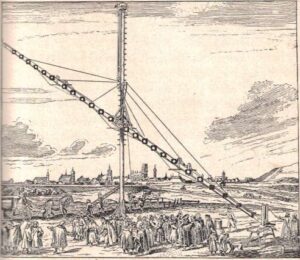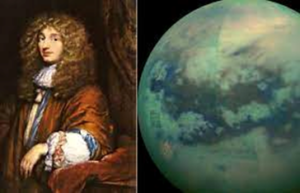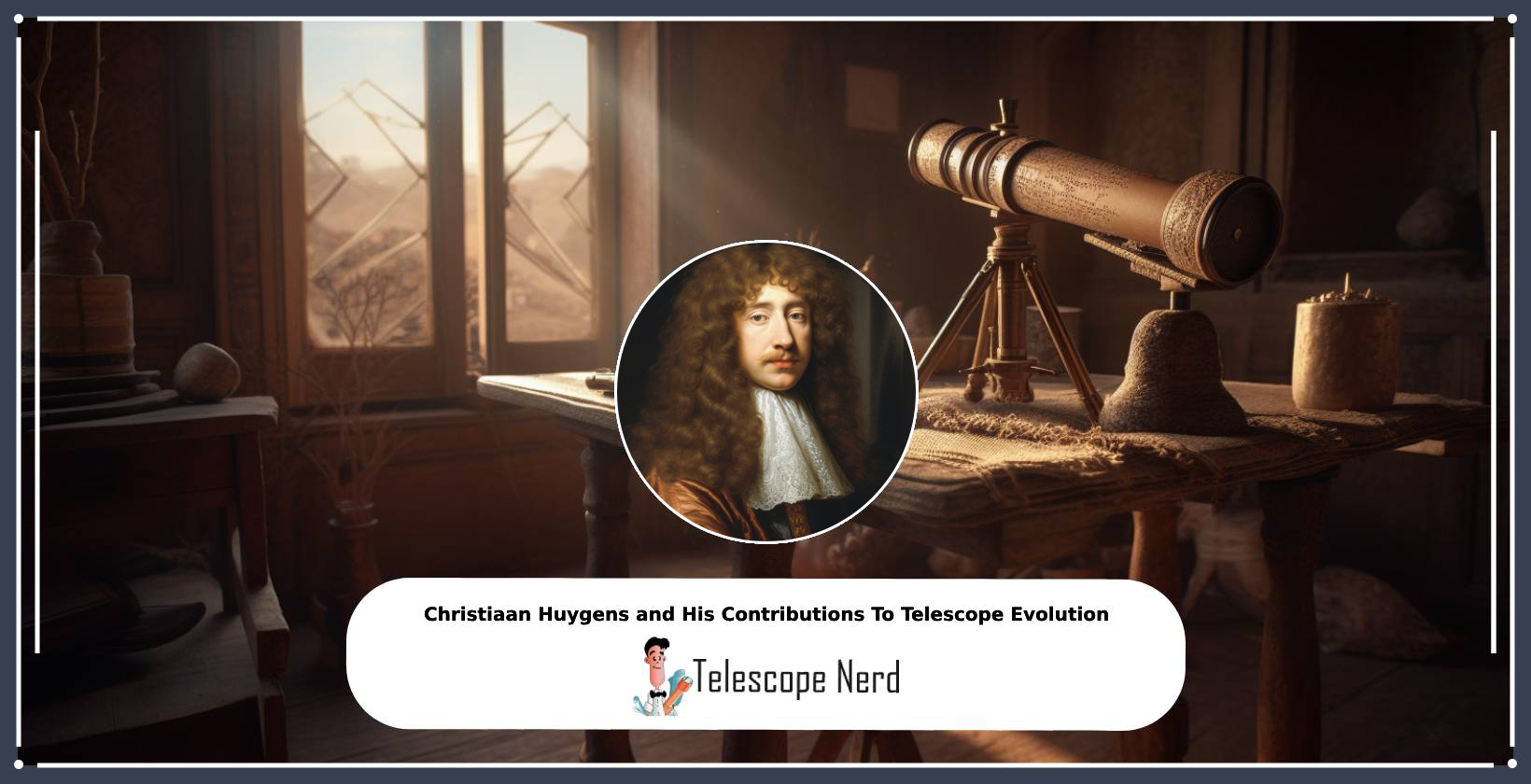Christiaan Huygens and His Contributions To Telescope Improvement
Christiaan Huygens was a Dutch mathematician, astronomer, and physicist who made significant contributions to the field of telescope design. He invented the Huygenian eyepiece, a type of compound eyepiece that reduced image distortion, and built refracting telescopes with improved optics and a focal length of 67 meters. Huygens’ telescope designs and innovations allowed for better tracking of celestial objects and led to his discoveries of the true shape of Saturn’s rings and its moon, Titan.
Who is Christiaan Huygens?
Christiaan Huygens was born in The Hague, the Netherlands, on 14 April 1629. He studied law and mathematics at the University of Leiden, starting in 1645. Huygens made significant contributions to the field of optics by formulating the wave theory of light. He is also known for his discovery of centrifugal force and for being the first theoretical physicist to use formulae in physics. In 1657, he created the first working example of a pendulum clock and published his work “Horologium,” detailing his research on clocks and their mechanisms. He grew a more profound understanding not only of mathematics but also of mechanical devices and kept an outstanding contribution in making telescopes. He designed some of the giant telescopes of the 17th Century. As an astronomer, Huygens made significant discoveries, including the true shape of the rings of Saturn and its moon, Titan.
What is Huygenian eyepiece?
The Huygenian eyepiece is a type of eyepiece used in telescopes, invented by Christiaan Huygens in the late 1660s. It consists of two plano-convex lenses with the plane sides towards the eye, separated by an air gap. The lenses are called the eye lens and the field lens. The focal plane is located between the two lenses. It was the first compound (multi-lens) eyepiece and was designed to improve telescopes. The Huygenian eyepiece is known for its simplicity in design and cost-effectiveness. However, it suffers from aberrations if used on telescopes faster than about f/10. A variant known as the Mittenzwey eyepiece uses convex meniscus lenses and is usable down to f/8.
What telescopes did Christiaan Huygens build?
Christiaan Huygens built refracting telescopes, also known as aerial telescopes, with a focal length of 67 meters (210 feet), making them the world’s largest telescopes at the time. The maximum magnification achieved by his telescopes was 43x. While the exact aperture of his telescopes is not explicitly mentioned, it can be inferred that he improved the design of telescopes and developed the Huygenian eyepiece, which helped reduce dispersion. His telescopes were primarily used for terrestrial observations. Huygens purposefully built his telescope lenses with a shorter focus than necessary, allowing the total telescope length to be significantly shorter.
What was Christiaan Huygens’s Telescope Design?
Christiaan Huygens designed and built an aerial telescope in the late 17th century, which was one of the largest optical telescopes in history. The telescope had a focal length of 210 feet (67 meters), making it the world’s largest telescope at the time it was built in 1686. The telescope used a simple iron cylinder built specifically for the purpose of mounting the objective lens. Huygens’s design featured a tubeless structure, which was an innovative approach during that period. Prior to building the telescope, Huygens published a book detailing how it would work in 1684, titled “Astroscopia Compendiaria”. The extreme focal length of the telescope made it difficult to use, leading to the continuation of alternative designs until extreme focal length was made obsolete by the achromatic lens in the mid-18th century. The specific size of the objective lens used in Huygens’s telescope is not readily available, but it would have been designed to meet the optical requirements of the time for astronomical observations.
The 17th Century Giant Telescopes built by Christian Huygens

Fig 1: A giant telescope Christiaan Huygens made in the 17th Century
What Did Christiaan Huygens Discover With His Telescope?
Christiaan Huygens’ telescopic advancements led to discoveries such as the rings of Saturn and its moon Titan. He also discovered several interstellar objects and phenomena, contributing significantly to the field of astronomy. Huygens was the first to identify the true nature of the rings of Saturn, determining that they were not solid disks as previously believed, but rather composed of separate particles.
In the context of lens making being a secretive art during Huygens’ time, he managed to experiment and innovate despite the lack of shared knowledge and techniques among lens makers. Huygens purposefully built his telescope lenses with a shorter focus than necessary, resulting in a more compact and manageable telescope length. This design choice was advantageous as the best telescopes of the period were reaching unwieldy lengths, with some over 50 meters long. The excessive length of telescopes during Huygens’ time was due to the need to correct for chromatic aberration, a distortion in the view of objects caused by optical limitations in refracting telescopes. Huygens’ design improvements focused on enhancing the usability and portability of telescopes, making them smaller, lighter, and easier to transport. Huygens’ telescopes featured a shorter focal length than Galileo’s design, which resulted in a wider field of view. This wider field of view allowed for better tracking of celestial objects and improved the overall viewing experience. Additionally, Huygens’ use of compound lenses, known as Huygenian eyepieces, reduced the amount of image distortion compared to Galileo’s single lens design. Despite Huygens’ significant contributions to telescope design, his calculations were somewhat off when compared to modern-day knowledge of optics. This discrepancy may be attributed to his potentially flawed vision, as historical records suggest that Huygens may have been nearsighted like his father.
As Huygens was a contemporary of Galileo, he was in touch with Galileo’s research. Whenever Galileo made his own telescope, Huygens heard about that immediately and showed interest in developing the design. Galileo’s telescope was a refracting telescope with some optical limitations named chromatic aberration. This phenomenon distorts the view of the object in the telescope. After much research and experimentation, Huygens found that this problem can be reduced by using lenses with longer focal lengths. Finally, using this concept, he built a telescope having a length of 120 feet.
Using his own telescope, he discovered some of the most spectacular things in the deep night sky. He discovered the rings of Saturn though he was not the first one to find them. Galileo first saw that there was something around Saturn, but of the chromatic aberration, he did not clearly understand what they were. Galileo explained that he saw Saturn as a tri-form planet having a large center section attached to each side with other side sections. He also described that those side sections were much more like the handles of a vase. But Huygens, with his improved giant telescope, could understand the rings of Saturn and published his discovery in 1656.

Fig 2: Huygens (Left side) discovered Titan (Right side)
Huygens sketched Orion Nebula which was the first hand sketch of Orion. That is why the center of the nebula is named after him as the Huygens region. He also discovered Titan, which was the first moon of Saturn. He also found some other interstellar nebulae and double stars by his own telescope. In his telescope, there was no tube and only the air frame. Huygens named this type of telescope ‘tubeless’. However, his giant 120 feet long telescope was in fact difficult to use. Most of his discoveries were made with smaller telescopes which were around 40 feet long.
It was 1659 when he first saw a feature of the surface on another planet named Syrtis Major and a volcanic plain on Mars. He found that the length of Martial day is 24 ½ hours which is very close to the actual length of a day on planet Mars 24 hours 37 minutes.
Huygens was the first to undertake the task of establishing a planetarium that would lay out all the planets with their moons moving around the Sun.
Huygens was an extra-ordinary and devoted scientist who made a lot of contributions to astronomy and development of telescopes. He also had many other unpublished research works which were found after his death.

